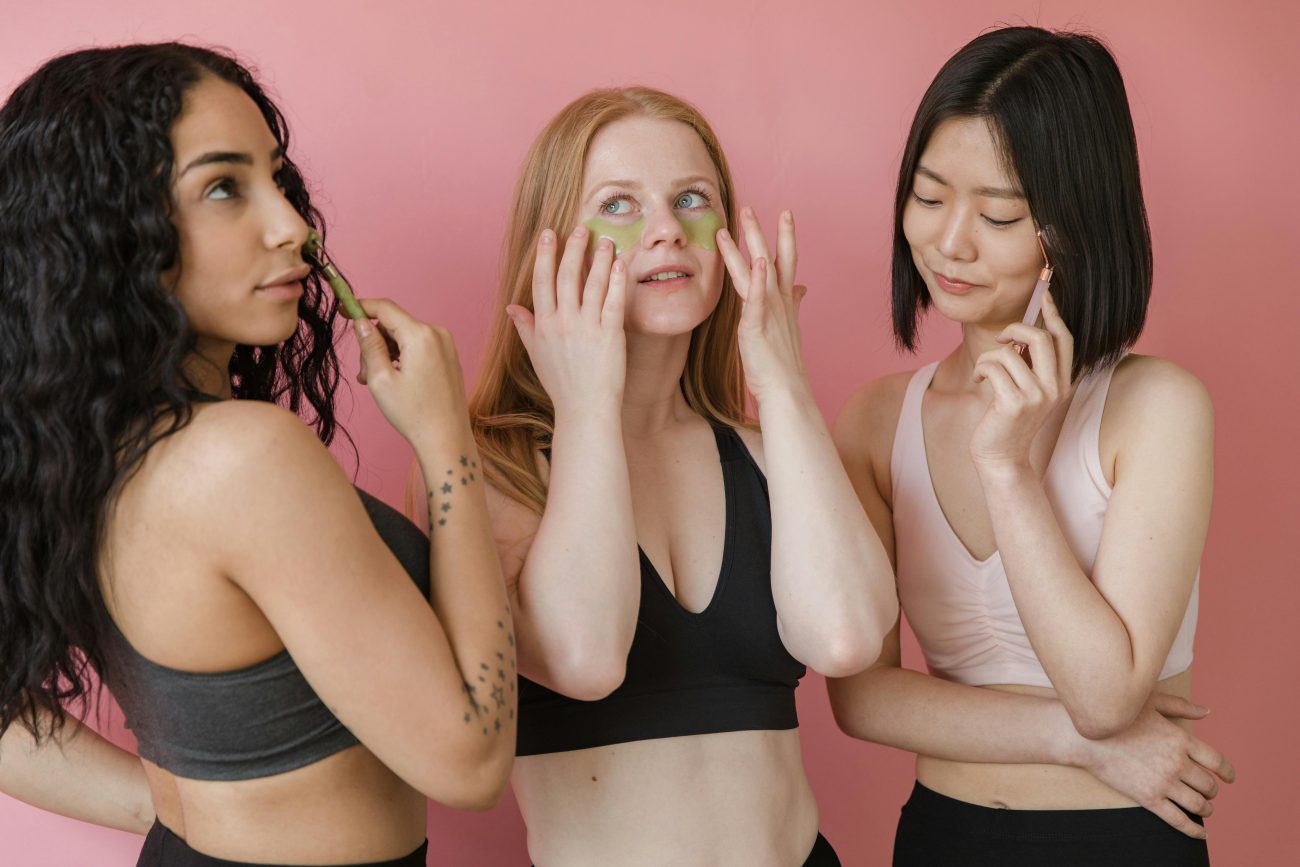Understanding your skin type is key to building an effective skincare routine. This guide explains how to identify your skin type using a checklist and blotting sheet test, then offers tailored care routines for each of the five main types: normal, dry, oily, combination, and sensitive. Your skin type can change over time, so adapt your routine accordingly and test products to find what suits you best.

Invest in Your Skin. It Is Going to Represent You for A Very Long Time.
Linden Taler
I agree with this statement. But before caring about our skin, we need to be aware of our skin type. Right. It is crucial to know our skin type. By the by, do you know what exactly sort of skin you have? We already said that it is noteworthy to be aware of what your skin type is. Today we are talking about all the different types of skin.
Skin Type
Understanding your skin type will help you avoid elements that are potentially harmful to your skin. That means a specific ingredient that may be beneficial to one skin type but can be lousy to you. Simply because your face feels dry after washing, it does not imply that you have dry skin. Also, just because you have a lot of acne and think your face is greasy does not mean you have oily skin. In addition, recognizing your skin type does not guarantee that you will have that skin type for the rest of your life.
Your skin type might change over time, with the seasons, and depending on your health. However, most people ignore their skin type and stick to the same skincare routine every day. That is why going to tell you guys the perfect skincare routine for your skin type.
Generally, there are five skin types:
- Dry Skin
- Normal Skin
- Oily Skin
- Combination Skin
- Sensitive Skin
We discuss this later in detail before we talk about how to find your skin type.
Skin Type Test
You can figure out what your skin type is with two simple tests with the help of five trends that have skincare concerns. You need to endure your skin has to follow through with the skincare tips that know you later. To begin, determine your skin type.
You have already gone through that two simple tests can find out what your skin type is. The first test will find if you have oily, dry, or normal skin, while the second test will determine whether you have combination or sensitive skin.
1. Checklist
At first, you have to understand what you think of your skin type. We give a checklist and go through it to see how many checks you have. To find out whether you know your skin type properly. Check all the items you have.
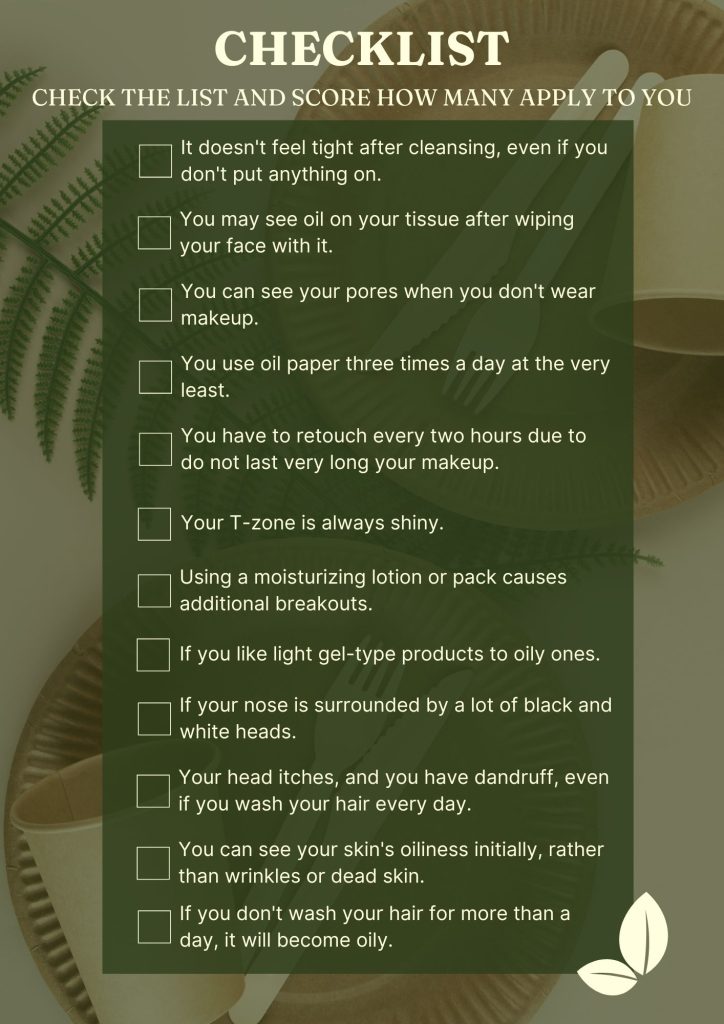
Well, how many checks did you put up with in the end? To answer straight away, if you have:
- one to four, you have dry skin.
- Five to eight, you have normal skin.
- Nine to twelve, you have oily skin.
Nonetheless, if your results were dry and oily, you may have combination or sensitive skin. Then, continue to the second test.
2. Blotting Sheets
There is a simple test you may use; yet, you will be unable to find out using this checklist. This test could assist you in determining whether or not you have combination or sensitive skin.
Steps
- First, carefully cleanse your face and avoid putting anything on it. Wait an hour without using any skincare and, then use your ready-made oil blotting sheets.
- Second, apply blotting sheets to your forehead, chin, nose, and cheeks to determine how much oil produces your skin.
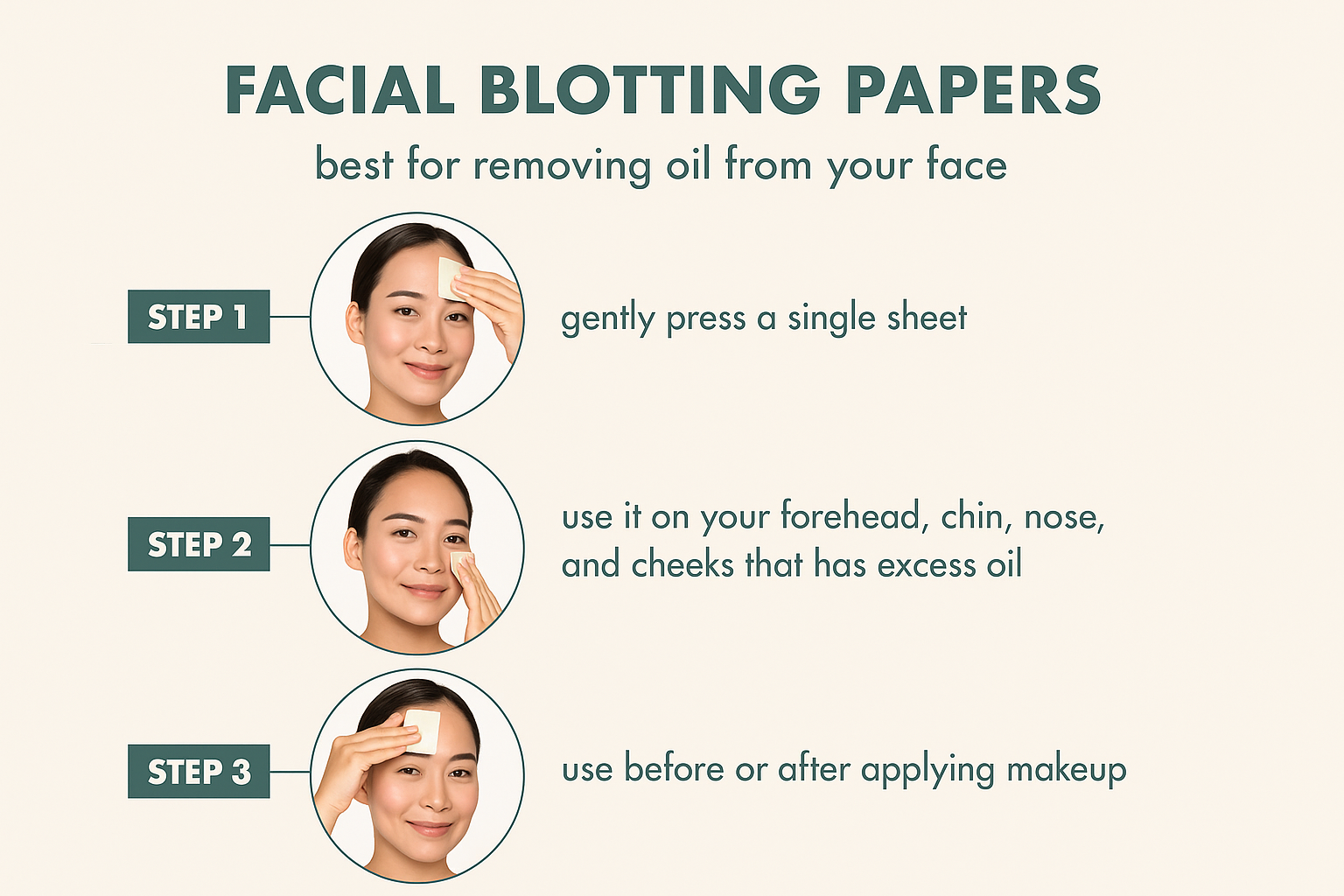
Result
- Falling off all the blotting sheets means you have dry skin.
- You have oily skin for staying on all the blotting sheets.
- All the blotting sheets only remain on your forehead, nose, and chin that convey you have combination skin.
- You have sensitive skin if they all stay on for a while and then fall off.
So, what was your Result, and what skin type do you have? It does not matter if you have regular skin or not. However, if you have dry skin, oily skin, combination skin, or even sensitive skin, you must begin to care for your skin. That is why going to tell you guys the perfect skincare routine for your skin type.
Skin Care Routines According to Skin Types
Now, It is time to share tips on exfoliation, cleansing, and care that depend on your skin type. In this part, we detail up
- Skin characteristics,
- care methods based on your skin type and,
- products (recommendation) based on your skin type.
1. Normal Skin Type
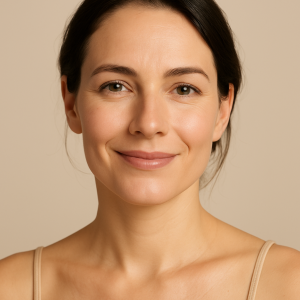
It is a skin type where water, oil balance is good and well balanced, which is called eudermic in the scientific term. The skin becomes dryer with age.
I) Features
- Fine pores
- Good blood circulation
- A velvety, soft, and smooth texture
- A fresh, rosy color uniform transparency
- No blemishes
- Not prone to sensitivity.
- Feel the elasticity right after cleansing.
II) How to Care
You lucky people if you have normal skinYou may feel a little dry: but, after a while, you can feel that your face is usual.
III) Products
To maintain what you have and try to keep your normal skin, the products that we recommend to you;
After cleansing your face, hydrate your face with toner containing ingredients like hyaluronic acid, beta-glucan, or glycerin, which help soothe and refresh the skin. Follow with a soothing cream rich in ceramides, beta-glucan, or shea butter to nourish and maintain hydration. After that, apply a moisturizing cream or lightweight cream formulated with vitamin E, panthenol (vitamin B5), or squalane. to keep the moisture from evaporating into the air. These cream tries to maintain the water and oil balance your skin already has. Your skin type can vary, as we already explained. As a result, it is noteworthy to look after your skin and keep it in good shape.
2. Dry skin
Produce less sebum than normal skin, which is generally referring to dry skin. Dry skin lacks lipids due to the lack of sebum. That is why it requires maintaining moisture and developing a protective shield against environmental stimuli.
Dry skin (Xerosis) is hard to recognize for varying degrees of severity and in different forms. Dry skin affects significantly more women than males, and all skin becomes dryer as it ages. Dry skin problems are a widespread complaint, accounting for 40 percent of dermatologist consultations.
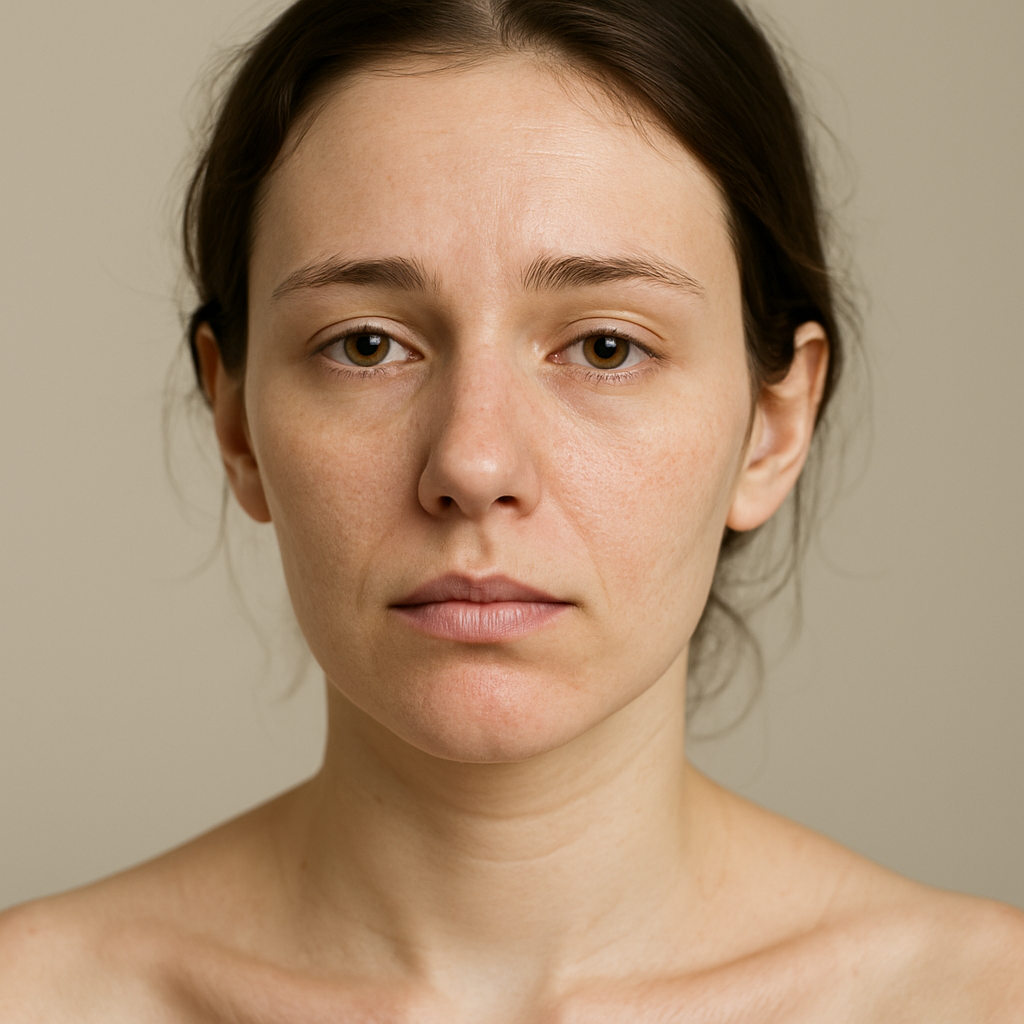
I) Features
- Elasticity is also low
- Your makeup becomes flaky.
- Prone to showing more visible lines
- May become itchy or irritated.
II) How to Care
For this, you need to use a moisturizer that has a rich oil balance. After that, use oil to prevent moisture from evaporating.
III) Products
i) Cleaning
The inappropriate cleansing approach for dry skin might cause your skin to get drier and lose suppleness.
a) Cleansing Oil
Use a cleansing oil with black sesame oil, black currant seed oil, and jojoba oil. It gently cleanses your pores of all filth and debris. In addition, this cleansing oil moisturizes and softens flaky and dry skin.
b) Foaming Cleanse
Next to the clearest foaming cleanse. You can try a cleanser that contains amino acids, hyaluronic acid, and ceramides that will give you the perfect water-oil balance. On top of that, the pH of this cleaner is low. As a result, it is suitable for all skin types and keeps your skin moisturized.
ii) Exfoliation
Your skin is drier for drawing on too much exfoliation. Apply a cream or a toner type exfoliant instead of a rich exfoliator as dry skin tends to be thinner than other skin. Take a few drops of an exfoliating toner containing 5% mandelic acid (AHA) on a cotton pad, and go from the inner parts of your face to the outer parts–help you lessen flakiness. Mandelic acid contains AHA so that you can exfoliate mildly and give moisturizing your skin as well.
iii) Toner
Dry skin needs a toner that can prevent drying right after cleansing. A toner containing plant extracts like licorice root, aloe vera, or centella asiatica helps with deep miniaturization. Apply 2 to 3 times to prevent inner dryness and tightens.
iv) Serum
You can pamper your skin with a serum enriched with ginseng extract. Your facial skin needs the proper nutrients and skin brightness that come from this ginseng extract. Also, the ginseng extract naturally heats your skin which, aids in circulation on your unbalanced skin helps the absorption of products.
v) Cream
Last but not least dry skin requires sufficient moisturization by hydrating and restoring the proper oil balance. Use a rich moisturizer that contains natural honey and propolis. Organic honey and propolis provide essential nutrients to your skin. It assists in the reduction of fine wrinkles on dry skin as well.
3. Oily Skin
Oily skin generates an excess of sebum, making your skin appear glossy and oily—especially in the T-Zone (forehead, nose, and chin).
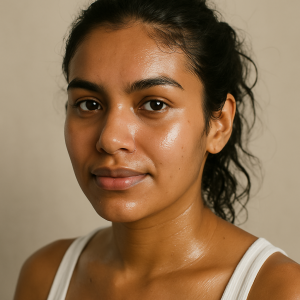
I) Features
If you have oily skin, you may be more likely to have
- enlarged pores,
- acne spots
- Acne breakouts
- a glossy shine
II) How to Care
Oily skin tends to lack moisture but produces a lot of oil. That is why avoid using products that contain a lot of oil and care when cleaning your face. Put on deep moisturizing your skin and a vitamin product to brighten your dull skin after exfoliating.
III) Products
i. Cleaning
It does not mean you need to clean your skin multiple times just because you have oily skin. It is more necessary to use a single product that helps to prevent excessive sebum production and cleanse thoroughly. You can try a soap that carries charcoal that inhibits sebum. And also, this soap has Moroccan ghassoul clay, which aids in the cleaning of pores. Additionally, after washing, it offers a fresh finish for oily skin.
ii) Exfoliation
Oily skin tends to be active prone due to sebum production and the clogging of pores. That is why you need to take extra care and using an exfoliant with black sugar particles will help you.
The black sugar particles help remove the thick dead skin and cell surface. It works well for blackhead removal and exfoliation. In addition, this exfoliation helps to remove the dirt and wastes in your pores thoroughly.
iii) Toner
Because oily skin has large pores and troublesome skin, using a toner is necessary that help with sebum production. A water-type toner with witch hazel, centella asiatica, or purslane extract is ideal. This toner assists in removing excess sebum and waste and gives the skin a light finish as well.
iv) Serum
Next, lay on serum will help you take care of your large and loose pores once you have used toner. Using the dropper to apply a serum enriched with zinc PCA, niacinamide, or witch hazel on areas with pore concerns will give you a tightening effect. It will assist in tightening your pores and controlling your sebum production after you have washed your face.
v) Cream
Because oily skin produces a lot of oils, you will want to choose a moisturizer that gives you a dewy appearance without a lot of oil. Use an oil-free gel-type cream that provides an immediate cooling sensation while constricting pores. Catechin, found in vitamin tree extract, is also present in this cream, which helps to brighten dull skin caused by pores and acne scars. The catechin has seven times more anti-aging elements than green trees.
4. Combination Skin
In combination skin, the cheeks skin is different from the T-Zone area. In easy terms, combination skin is a mixer with dry and oily.
I) Features
- an oily T-zone (forehead, chin, and nose)
- This area has increased pores, possibly due to pollutants.
- cheeks that are normal to dry
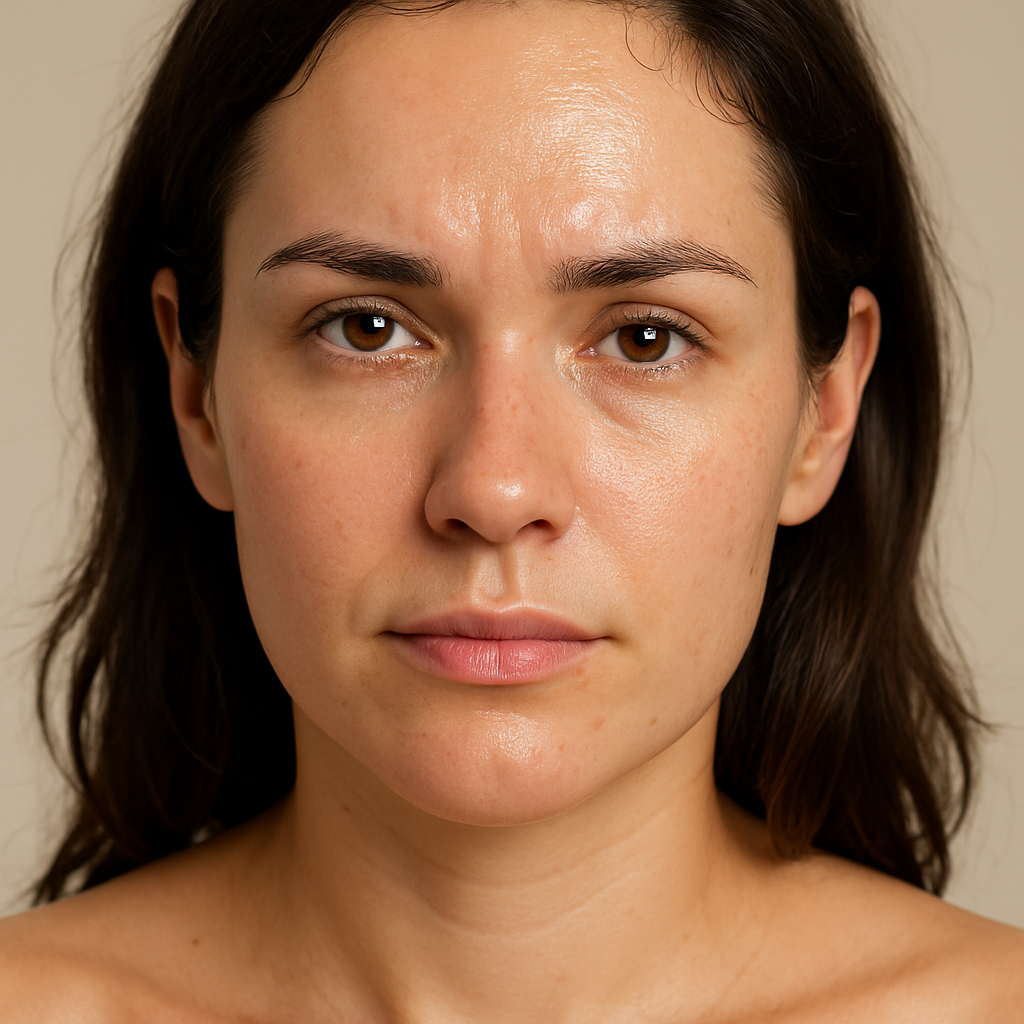
II) How to Care
This skin condition maintains your water and oil balance is very hard. You are prone to troublesome sometimes. Because you have oily skin on your T-zone and dry skin on your U-zone, you have to take care of these separately. Give your t-zone a full moisturizer and enough oil to hydrate your U-zone.
III) Products
i) Cleaning
Focuses on the oily t-zone and helps with sebum production. If you focus on the dry area, it can be hard to cleanse the excess sebum on the t-zone and remove dirt and waste in the pore. A cleaning soap contains Charcoal, Simmondsia Chinensis (Jojoba) Seed Oil, Aqua, Melaleuca Alternifolia (Tea Tree) Leaf Oil which is effective in removing waste in the pores. Run it around the T-zone area and after using your cheeks and around the mouth. Afterward, rinse thoroughly.
ii) Exfoliation
It is difficult to find, although it is good to use an exfoliator that works well for both dry and oily skin. A mild-type exfoliator that contains natural enzymes removes dead skin cells. The vitamin E capsules that melt during exfoliation give the skin nutrients and help control sebum as well.
iii) Toner
It is good to use two types of toner, considering your t-zone and u-zone areas.
For the u-zone areas, you use a toner that includes botanical extracts like aloe vera or centella asiatica. Use a cotton pad and wipe around the u-zone. If you feel like the u-zone is very dry, you can place the cotton pad on your cheeks until you apply toner on the t-zone.
Then use a light water type toner with witch hazel, zinc PCA, or purslane extract on your t-zone areas.
iv) Serum
Oily skin with a lot of sebum and dry skin lacking moisture both need moisturization. A serum formulated with beta-glucan, hyaluronic acid, or plant-based peptides maintains the moisture balance. After using a toner to take care of your skin texture and chorus, use the serum to hydrate your skin.
v) Cream
You have moisturized in the previous step, then use a cream to prevent the moisture from floating away. Instead of using a balm type or a lightweight gel type, try and use light moisturizing cream.
A cream enriched with vitamin E, sunflower seed oil, and sea buckthorn extract gives not only full moisture effect but also nutrients. Giving you a lightweight finish makes it appropriate for combination skin. It is a product that could help maintain healthy water and oil balance for combination skin.
5. Sensitive Skin
Sensitive skin, the outer layer is thinner than in other areas. Sensitive skin is a word used to describe a condition rather than a medical diagnosis. It is a term commonly used to describe skin, has a low tolerance for cosmetics and personal care items. According to a study, around 50% of women and 40% of men may have sensitive skin.
I) Features
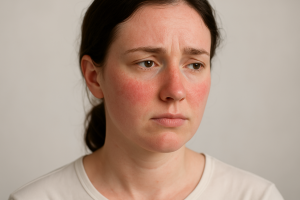
- Signs include stinging, itching, and burning,
- Physical skin changes like redness, dryness, scaling, peeling, lumps, and hives.
II) How to Care
You cannot use any products since your skin may be easily triggered by defined components, like dyes or fragrances, as well as environmental factors. When choosing products, you must first test them on sensitive parts of your skin, such as your wrists, the back of your neck, or behind your ears. It is good to remember products and ingredients that irritate your skin and try to stay away from them in the future. The best thing is to use the mild products and gently cleanse while focusing on soothing your skin.
III) Products
i) Cleaning
For sensitive skin, it is better to prefer mild cleansing while removing the waste to deep cleansing. A low pH foaming cleanser that contains amino acids, hyaluronic acid, and tea tree leaf extract fits any skin type. Pumps 2 to 3 times and, you remove the waste in your pores. For sensitive skin, using a gentle foam cleanser is ideal. Even after cleansing, your skin is nourished and does not feel dry.
ii) Exfoliation
Too much exfoliation on sensitive skin can harm your skin; physical exfoliators and peeling gels could irritate sensitive skin. Use a toner or a cleansing product with exfoliation instead of peeling.
A powder wash containing green tea extract, papain enzyme, and sodium bicarbonate is appropriate for sensitive skin due to its organic ingredients. You feel hydrated for this natural surfactant as well. Use lukewarm water to bubble up and, the enzyme will help melt away dead skin cells mildly.
iii) Toner
It is good to use a toner for your sensitive skin that could soothe the irritation from external factors. A fragrance-free, alcohol-free toner made with licorice root extract, beta-glucan, and aloe vera removes excess waste and gives a soothing and hydrating effect after cleansing. That is why people with dry skin love this toner. The previous version may contain essential plant oils that have a slight scent. But the new version without these oils means a scent-free option for super sensitive skin.
iv) Serum
Due to irritation, the sensitive skin becomes red and gets heated. So, it is noteworthy to lower the temperature of your skin. A serum that contains centella asiatica, beta-glucan, and sodium hyaluronate hydrates and moisturizes your skin, maintaining a good skin balance. It is suitable for sensitive skin because it is made with all-natural components, and it hydrates while also lowering the temperature of your skin.
v) Cream
A moisturizer formulated with ceramides, shea butter, and jojoba oil is the best daily option for irritated and sensitive skin. It moisturizes, calms, and soothes irritated skin. It has a soft texture that provides your skin with the comfort and protection it needs.
Final Thought
Finally, whatever your skin type, you should keep in mind that it is hard to categorize all skin types into these five categories. Remember that what we have prepared for you today is the most common and vast category.
You cannot claim you have a specific skin type, though. You could be dry on the outside but have sensitive skin on the inside, or you could be oily on the outside yet have dry skincare concerns. Also, we indicated at the start– your skincare type might vary over time owing to a variety of reasons.
So, it would be a good idea to use one or two products in your routine instead of the ones we mentioned. And observe how your skin adjusts and reacts to those products. I hope you figured out your skin type so you can perfectly care for it and appreciate it.
